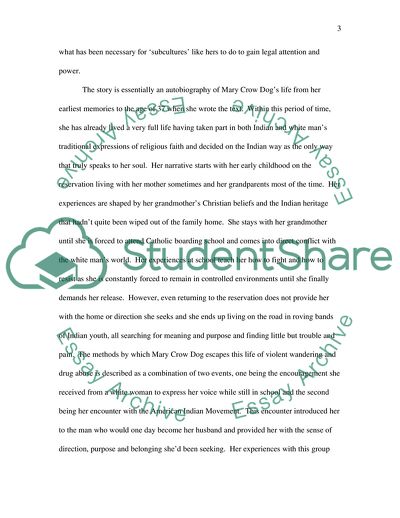Cite this document
(Lakota Woman Essay Example | Topics and Well Written Essays - 1500 words, n.d.)
Lakota Woman Essay Example | Topics and Well Written Essays - 1500 words. https://studentshare.org/literature/1722117-lakota-woman-by-mary-crow-dog-and-richard-erdoes
Lakota Woman Essay Example | Topics and Well Written Essays - 1500 words. https://studentshare.org/literature/1722117-lakota-woman-by-mary-crow-dog-and-richard-erdoes
(Lakota Woman Essay Example | Topics and Well Written Essays - 1500 Words)
Lakota Woman Essay Example | Topics and Well Written Essays - 1500 Words. https://studentshare.org/literature/1722117-lakota-woman-by-mary-crow-dog-and-richard-erdoes.
Lakota Woman Essay Example | Topics and Well Written Essays - 1500 Words. https://studentshare.org/literature/1722117-lakota-woman-by-mary-crow-dog-and-richard-erdoes.
“Lakota Woman Essay Example | Topics and Well Written Essays - 1500 Words”. https://studentshare.org/literature/1722117-lakota-woman-by-mary-crow-dog-and-richard-erdoes.


